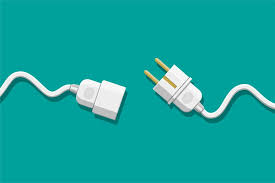 What changed in technology adoption of older adults? Ranting about technology adoption 15 years ago, it obviously was a different world. There were dedicated email devices (Presto, Celery, Mailbug) – clearly the standard personal computer was not too friendly. The Jitterbug phone addressed the problem that cell phones weren’t too friendly, and the concept of ubiquitous access to the Internet through easy-to-use browsers was a glint in the innovator eye. People still shopped in stores – the Mall of America was thriving compared to strip malls, bookstore sales were at their peak – not yet traumatized by Amazon. Facebook introduced Live Feed, wrecking Myspace. Banks still had branches, the drop of 1700+ branches hadn’t happened yet, no doubt because the 2008 market crash hadn’t fully kicked in.
What changed in technology adoption of older adults? Ranting about technology adoption 15 years ago, it obviously was a different world. There were dedicated email devices (Presto, Celery, Mailbug) – clearly the standard personal computer was not too friendly. The Jitterbug phone addressed the problem that cell phones weren’t too friendly, and the concept of ubiquitous access to the Internet through easy-to-use browsers was a glint in the innovator eye. People still shopped in stores – the Mall of America was thriving compared to strip malls, bookstore sales were at their peak – not yet traumatized by Amazon. Facebook introduced Live Feed, wrecking Myspace. Banks still had branches, the drop of 1700+ branches hadn’t happened yet, no doubt because the 2008 market crash hadn’t fully kicked in.
Fast forward to today. As the bank branches closed and online shopping took off, behavior changed. No more shopping malls will be built in the US – and in fact there may just be 150 left. Those remaining will reinvent themselves in order to succeed. Older adults began to go online, and between 2017 and 2022, according to the US Census the 65+ population grew to more than 56 million people, and the percentage without a computer in the home shrank. Broadband (high speed Internet, as defined by the FCC) subscription service has been widely adopted by the 65+ population (see Figure 1).
65+ | 2017 | 2022 |
Total population | 49.3 million | 56.1 million |
No computer in household | 17.6 % | 8.2% |
Broadband internet subscription | 74% | 84.8% |
No internet subscription (with computer) | 7.7% (3.8 million) | 6.8% (3.8 million) |
Figure 1
What do these changes imply? As you can see for yourself in any restaurant, most older adults today have smartphones – adoption from 43% in 2018 to 61% (or likely higher) today. The devices turned out to be extremely useful – from taking pictures to getting directions to texting with relatives to use of social media sites to depositing a check and verifying a bank balance, tracking steps and changes in health status and on and on.
- Between 2017 and 2022, the population of 65+ increased substantially (10,000 per day until 2030) and the percentage without a computer went down substantially.
- Broadband internet subscriptions went from 74% to almost 85%.
- The numbers who don’t have Internet subscriptions have remained the same, perhaps because of cost, perceived utility, or living in a location where it is difficult to access. As of 2019, there were still at least 265,000 people in the US using dial-up to access the Internet at home. Satellite (more than 8 million) enabled Internet access in rural areas.
If most older adults have access, what’s next – maybe a less-frustrating user experience? Perhaps the next wave of improvements should be on mobile device user interfaces, since advice guidelines acknowledge numerous problems – no doubt all of which older adults have experienced. In fact, they are still nearly as unusable out of the box as in 2013. But smartphones are a prerequisite to owning a smartwatch, which can make all older adults look cool. So there it is. Perhaps machine learning about our device usage patterns coupled with conversational AI -- "what do you want to know?" will take people's minds off of the fact that the malls, bookstores, bank branches and even grocery stores are optional. As the old Forrester Research tagline observed, "Technology Changes Everything."
[See new report AI and the Future of Care Work]

 What changed in technology adoption of older adults? Ranting about
What changed in technology adoption of older adults? Ranting about